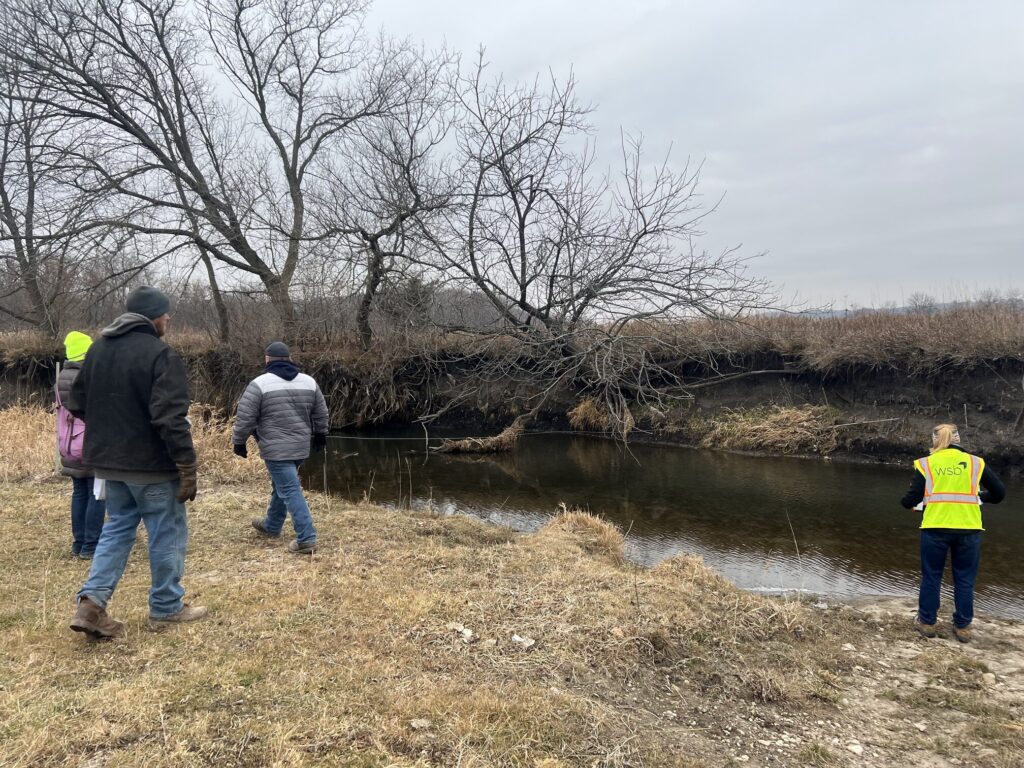What is MNTU’s Habitat Program up to during the cold Minnesota months?
Dr. Jennifer Biederman, MNTU Habitat Director

While late winter and early spring might not seem like the peak time for trout stream restoration in Minnesota, MNTU’s habitat program is anything but dormant. Though fieldwork and in-stream construction are restricted by the DNR between fall and mid-April to protect spawning trout, our habitat program is bustling with activity. Here’s a glimpse of what we’ve been up to this winter:
1. Planning, Bidding, and Coordination: The winter and early spring are a time for extensive planning, bidding processes, and coordination efforts. Stream restoration work involves collaboration with various partners, including the Minnesota Department of Natural Resources, Soil and Water Conservation Districts, design engineers, consultants, local governments, and TU chapters. We kick off the season with an annual coordination meeting between MNDNR and MNTU, prioritizing streams for restoration. Subsequently, MNTU seeks funding from the Lessard Sams Outdoor Heritage Fund for selected streams. Once funding is secured, we embark on a comprehensive planning and implementation journey that spans up to five years.
2. Bidding Out Project Designs and Construction: Securing funding marks a crucial milestone, leading to the bidding of project designs to engineering firms specialized in stream restoration. This spring, we’re bidding out project designs for Eagle Creek (Scott) and Spring Creek (Wabasha), among others. The design process involves geomorphological surveys, collaborative design walks with partners, and numerous meetings to finalize the design before seeking permits. Our goal is to install these projects during the ’25 work season. Simultaneously, we are bidding out construction on projects slated for installation during the 2024 work season, including Rice Creek (Fillmore), Mill Creek (Fillmore), Maple Creek (Fillmore), and culvert replacements in the Baptism watershed in northeast Minnesota.
3. Spring Project Inspections: Although installation of a full-scale project is transformative, a 2023 project is not complete. Streams are dynamic systems, and it takes time for features to settle following installation, especially against high spring flows and heavy rainfall events. To assess the project’s resilience, MNTU works with engineers to conduct inspections during early spring, for three years post-construction. These inspections encompass vegetation maintenance, identifying any in-stream or bank repair opportunities, and enhancing vegetation establishment within the easement corridor through mowing, spot-treating invasives, and seeding. Three years of vegetation management and repairs are built into all our contracts.
4. Learning and Sharing: The colder months are an opportune time for partners to gather, share updates, successes, and the latest best practices. This year, MNTU habitat staff participated in events like the annual Stream Practitioners meeting (hosted by MNDNR), the Upper Midwest Stream Restoration Symposium (hosted by UMN), and the Driftless Area Stream Restoration Symposium (hosted by TUDARE). Additionally, we’ve been attending MNTU chapter meetings to provide updates on our habitat program and connect with our members.
The best part of the cold winter planning and coordination season? The imminent work season, just around the corner with warmer temperatures arriving in mid-April. Stay tuned to the e-newsletter for more updates, and feel free to reach out if you have any questions about the habitat program. You can contact me at jennifer.biederman@mntu.org.
